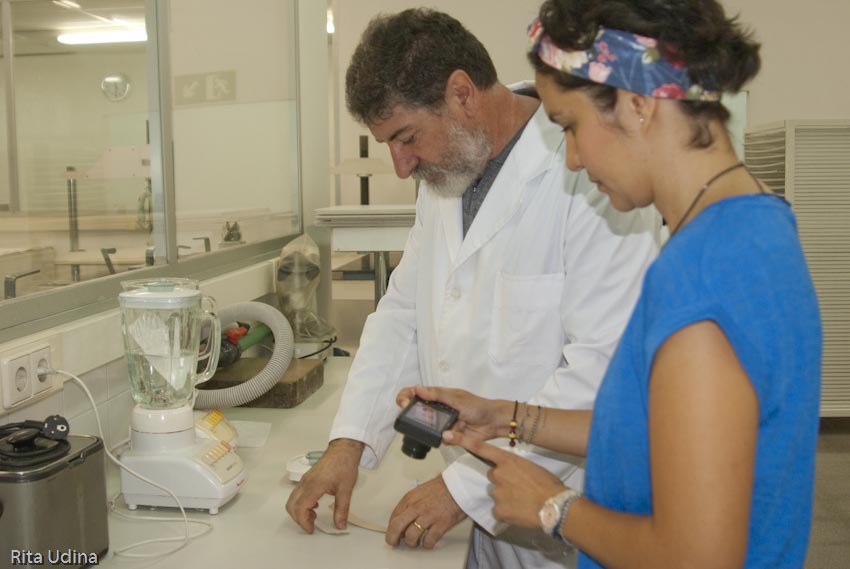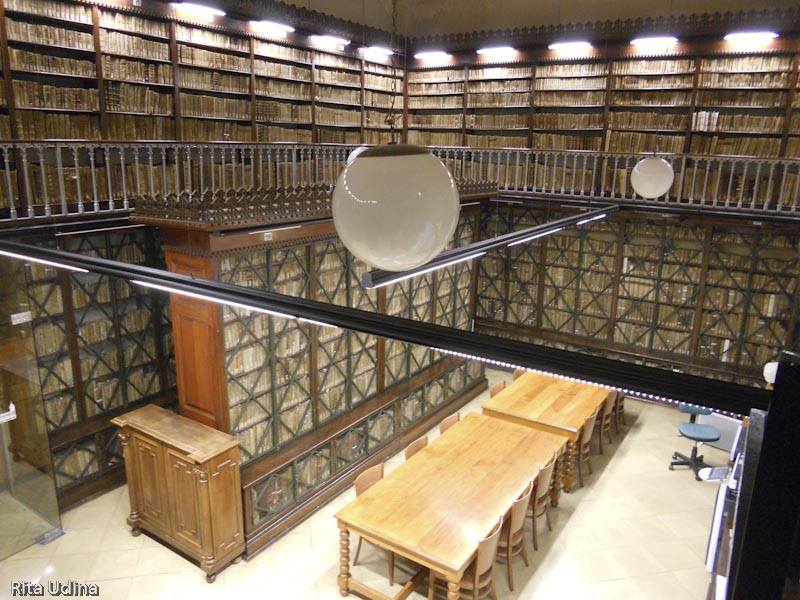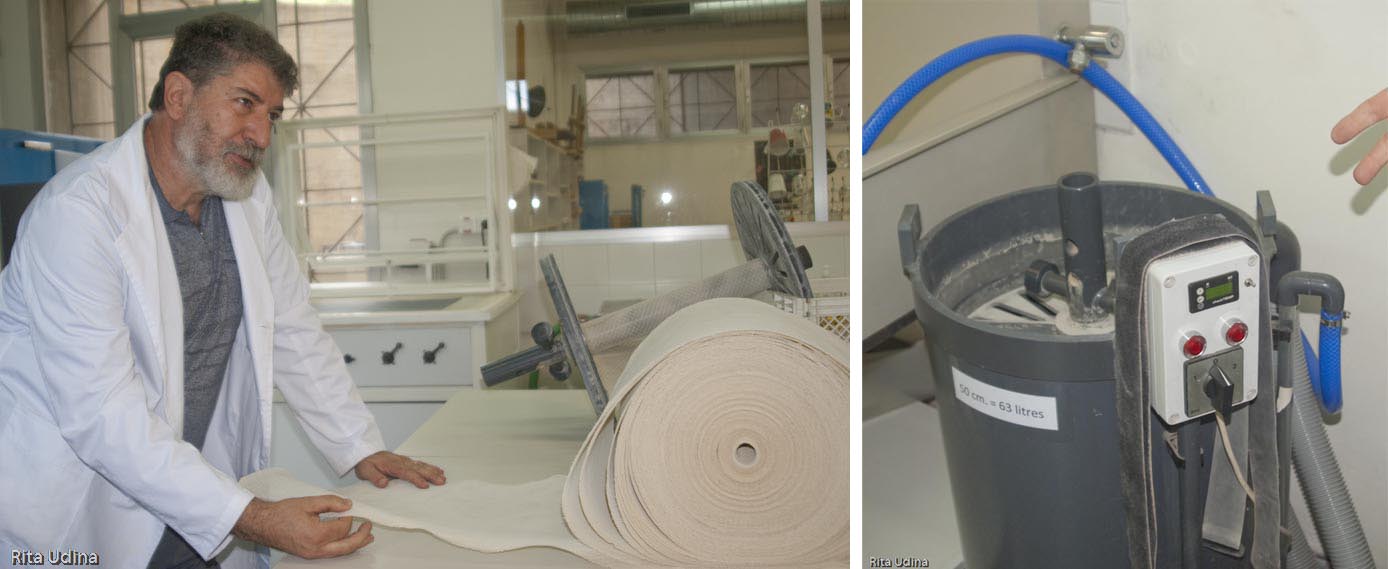Books washing-machine and new conservation methods for leather bindings
At the conservation studio of the Barcelona University (UB) Library

Leaf casting pulp preparation is made in two phases. One contains the tainted fibres and the rest is a long fibre based pulp which is dispersed separately.
Every time I visit Domènec I wonder why it took me so long since the last time.
Domènec Palau Sallent is chief restorer for many years at the restoration centre of the Library of Barcelona University, two of which I was part of the trainees staff that has been always there. I have a wonderful recall from those days, both for the student colleagues with whom I met, and for the learnings of that stay: we learnt while having fun, and we learnt a lot!

The Library of the University of Barcelona has countless bound volumes of all ages, sizes and colors. A single room is not enough to fit them all!
The restoration laboratory gathers all the requirements to ensure this: well-equipped facilities and material to restore (UB was founded in 15th century… imagine what sort of books they have!), but much more important than these: the will to share knowledge, both from Tana Andrades as Domènec (and then there was Teresa Marquès too!).
I come visit with Laura Corso, restorer from Colombia, and I ask him to show her the fabulous “books washing machine” which he designed and made, as well as many other stuff that amazed me when I started being there, such as the preparation of pulp samples, and a large etcetera of great discoveries and tiny tips.

The “books washing machine” contains a plastic roll mesh where loose sheets from books are placed, rolled around a central axis (tilted, in second term in the first image). The entire tube is placed in a tank where water circulates. Water can contain deacidification agents or whatever needed. It greatly simplifies aqueous treatments either in sink or bucket, and when it comes to books it is really fantastic.
Just as I expected he explains with generosity and in detail this and much more. He also introduces me about a new method they have just been using lately on leather bindings: much more simple (fast to apply and not expensive in resources), and it doesn’t require to lessen the original leather edges. It seems to me a fantastic idea that convinces at the very first glance!
Let’s hope that they’ll soon explain this method on an article or a speaking.
Well, if not, I leave their studio -as always- with my head full of ideas to put in practice.
Domènec, thanks a lot for everything!
Aknowledgement:
Domènech Palau, for his permanent availability to share his knowledge, and all the staff from the conservation studio of the Library of Barcelona University.

